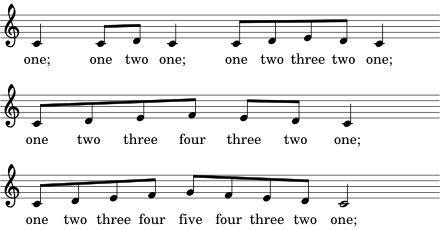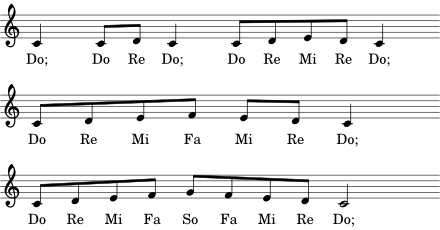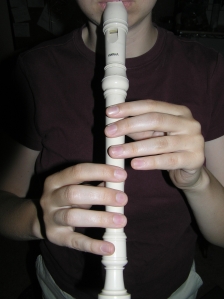I’ll start with a fairly intuitive statement: “Directing with confidence is more effective than directing with timidity.” This is pretty obvious, right? If the director is wishy washy about what he/she wants then the singers won’t be sure about what to do, how to perform, or how they’re doing. Rehearsals get muddled and will likely be dominated by one or more charismatic choir members. So here’s a question, “how do I gain honest confidence with conducting when I don’t know what I’m doing?” because, lets face it, if you haven’t already done some directing you don’t know what you’re doing. There are a lot of skills that can’t be fully developed unless you’re in front of a choir. It’s a hard thing to do with integrity, so I’ll explore four techniques for overcoming timidity.
Realize that Your Choir Wants to be Directed
From my experience being in several choirs and from what I’ve heard others say about being in choirs, it seems that the default scenario is the director is essentially dictator of the choir…. and this is a good thing. A confident conductor, one who gives lots of instructions, interrupts the choir fairly frequently with notes, and knows what he/she wants is considered a good thing by many singers. You can interpret this as the following: your singers wants to put their faith in you to understand the music and how it should be sung. They want you to tell them what to do. This is OK.
I use this piece of knowledge when I want to experiment with techniques. When I’m only 75% sure that something will sound good and is a legitimate way of executing something I’ll tell myself that they want to be directed and if it doesn’t turn out well we can just change it. If a suggestion flops it’s not the end of the world.
On the other hand dictatorial direction can be taken too far. If you consistently tell your singers how to sing a piece of music without putting the time in to study it, your better singers will begin to notice and may mutiny. Also speaking as though you know what you’re talking about when you actually don’t will only work as long as the rest of your singers remain ignorant of what you’re talking about. For instance, I direct a medieval and renaissance choir so if I start picking out music by Bach, and then proclaim it to be perfectly in period than those with any sense of musical time periods–Bach is from the high Baroque era–won’t be happy with me. Stability only occurs as long as the singers are either ignorant or afraid of me. (The latter is of course unlikely since it’s a volunteer group with few if any social repercussions associated with quitting.) Moreover it shows that I’m incompetent and don’t care about the choir or the music. Not good.
Essentially the relationship between the director and the singers is just that: a relationship. The singers are probably more willing to give you a the benefit of the doubt than you may realize, but by the same token, if you abuse their good faith the good ones won’t be happy about it. As long as you’re putting in the time and the effort (i.e. showing you care), they’ll most likely be forgiving when you screw up.
Join another Choir
This is probably the best thing you can do to improve your directing skills. After you’ve been directing for a while you forget what it’s like to be a choir member. Things like what it was like to just have to worry about the music and just do what the director tells you to do. Being the choir member of a different choir gives you that experience again. And on top of that you get to watch another director direct, which is an incredibly good thing. If the director is bad then you’ll probably feel less critical about how you direct, thus gaining more confidence, and if the director is good you can a learn a lot from him/her. Chances are you’ll notice a bit of both. There are some areas where do things better and other areas where you could stand to improve. Other benefits of singing in another choir include borrowing vocalizes and discovering new music for your choir to sing. So, lots of good reasons to join one.
I started singing with the Arbor Consort a couple months ago and there has been measurable improvement in my directing ever since. It’s seriously the most useful thing I’ve done to make myself a better director.
Know What You Want
It’s a lot easier to be confident when you know what you want out of your singers. When you’re having a hard time coming up with performance suggestions it’ll look like you’re not being confident. Moreover if you don’t give any suggestions you’ll still look incompetent. So you’re caught between a rock and hard place if you haven’t done your homework. Conversely when you’ve studied the music and can hear what you want in your head you’ll know what to listen for when your choir is singing and you’ll probably find that your practices are much more fruitful, you’re acting more confidently, and you actually are a fairly competent director.
Be Organized
Similar to knowing what you want is being organized. Having an agenda for the rehearsal and practicing for the rehearsal are easy ways to offload some of the mental tasks of directing. The more tasks you struggle to juggle at rehearsal the less prepared you’ll look, and not surprisingly you actually aren’t prepared. Again, do your homework. Know what you’re going to work on and prepare for the rehearsal. It’ll make your rehearsals so much better.
A Little Note on Confidence
Technically confidence is an internal issue. You don’t actually have to have any knowledge or experience in order act confident. It’s about trusting yourself and your ability to deal with the tasks at hand. So technically you shouldn’t have to do anything to be able to direct with confidence. That being said blind, ignorant, arrogant confidence doesn’t do anyone much good. Ideally you want to have a foundation for self-trust, and things like increasing your knowledge, joining another choir, knowing what you want, and being organized help to form that foundation. You actually have skills and knowledge you can draw upon.
To illustrate the point further, take this example. Strictly speaking you can jump off a building with full confidence that you’ll be just fine. The thing is having confidence where you haven’t take precautions doesn’t make hitting the ground any less effective at killing you than jumping without confidence. In fact your lack of confidence might stop you from jumping in the first place! This is akin to arrogantly leading a choir without having put the time in to study a piece of music. Not good. You just look stupid to those who know any better. At the same time there is such a thing as irrational self-doubt. If you’ve studied bungee jumping, have the right equipment, and have an expert at the jump site then you should with could conscience be able to jump off that bridge. Yes something could go still go wrong, but you’ve prepared yourself as best you can. If you’re in this situation and still have a hard time trusting yourself, that’s when it’s time for affirmations. With choir directing this would be the equivalent of still being timid even when you’ve prepared. That’s when you tell yourself things like “the choir wants me to be an assertive director.” And unlike bungee jumping, if something goes wrong with choir directing your most likely not going to die.
If you want to have self-confidence that’s based on knowledge and experience then you have accept the fact that you won’t have it right at the beginning of your career. You simply don’t have the knowledge and you don’t have the experience. With some work on your own, though, you can minimize the time that you’re in this stage such that you soon have that real grounded confidence you’re looking for. So what do you do during that period of inexperience? Consciously fake it. What I mean by this is that you fully understand and accept that the way you’re acting is not based in actual experience and knowledge, and that you commit to making that state of ignorance and inexperience as temporary as possible. As long as you graciously acknowledge your mistakes when you inevitable make them your choir won’t think worse of you for it.







